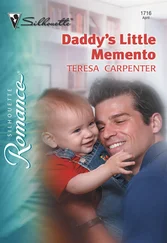The task facing Dist. Atty. Gil Garcetti in the O. J. Simpson case is daunting and unparalleled: he must try to win murder convictions against an American sports legend well-known to the public for his grace and charm.
You’re tellin’ me.
If the grand jury was to indict, we needed to demonstrate that O. J. Simpson had the opportunity to commit these two murders; then we’d have to place him at the scene of the crime. That’s why I led Tuesday morning’s session with Jill Shively. Jill, a clerk for a film-supply company, had called the police the preceding week and told them she’d spotted O. J. Simpson in a white Bronco speeding northbound on Bundy right around the time of the murders. Talk about an alibi killer!
Jill Shively, I must say, seemed like a real gem. She was dressed neatly and conservatively for her testimony. She was articulate. She was confident. In fact, Scott Gordon, one of my fellow D.A.s, knew her because their children went to the same school.
Just before she took the stand, David asked Shively if she had told anyone that she had been called to testify. “No,” she told him. “Just my mother.”
“Are you sure?” he pressed her.
“Absolutely,” she said without hesitation.
If she could pin Simpson to that location, in that car, at that hour, it would be almost as good as having an eyewitness. So it was essential to nail down the time she saw him. On the witness stand, she did this beautifully. “I left my house at ten-forty-five P.M.,” she said.
“Why are you so certain?” I asked.
“Because I was trying to get to the store that closed at eleven and I wanted to get something to eat,” she said. Bingo. Vannatter and Lange had even checked with the store to confirm their closing time-another assurance that Shively was on the level.
Then she told her story. “A white Bronco runs the red light and goes through the intersection and almost hits me,” she said.
“Were you able to see the person seated in the Bronco?” I asked.
“Yes, I was,” Shively said. “It looked like he was mad, or angry.” She explained that the Bronco driver was unhappy because a third car-a Nissan-blocked his path. The Bronco driver screamed at the Nissan, “Get out of the way! Move the car!” Finally there was room to pull around the Nissan, and the Bronco sped away.
“Now, that whole intersection where you witnessed all these events, is it dark or is it well lit?” I asked.
“It’s well lit by streetlights and a gas station there,” she said.
“So were you able to see the driver very clearly?”
“I recognized him right away.”
I paused for a beat, because I wanted this next answer to have some dramatic effect.
And who is he?” I continued.
“I saw O. J. Simpson,” she said.
You get a jolt of adrenaline from a nice courtroom moment.
There was no reason to believe that I had just presented the grand jury with a flat-out lie.
But I had.
The next morning, I’d barely stepped out of the elevator on the eighteenth floor when reporters began asking me whether I’d seen the tabloid TV show Hard Copy the night before. It turns out that Ms. Shively-our alibi killer-had made an appearance. Despite having insisted to us that she had told only her mother about the Bronco incident, our star witness had found time to address several million television viewers, proudly displaying her grand jury subpoena for the cameras.
The news sent me reeling. But things got worse. On my desk was a fax from a television actor named Brian Patrick Clarke. He was claiming to have lost money to Shively and considered her a consummate liar.
Normally, you take the imprecations of a disgruntled business partner with a grain of salt. But Clarke’s story had a paper trail to back it up. According to Clarke, Jill had presented herself to him as a screenwriter and asked him to read a script she had purportedly written. She’d said a production company was about to buy it for $250,000, and she wanted Clarke to star in it. Before this bonanza arrived, though, Jill allegedly managed to borrow $6,000 from Clarke. And guess what Clarke later discovered? The script wasn’t Shively’s. In fact, it was the screenplay for a film in pre-production titled My Life , which starred Michael Keaton and Nicole Kidman. Clarke filed a suit against Shively in small-claims court and won a judgment of $2,000.
“Get that woman back in here!” I hissed to Phil.
We hauled Shively back into David’s office and started grilling her about Hard Copy . It turned out that she’d done the television interview the day before her grand jury appearance-for $5,000. At the time she appeared before the grand jury, she explained nervously, the show hadn’t aired. It wasn’t going to air until afterward. She thought it was okay. She just “forgot.” She hadn’t slept well, and she was nervous, and she “really wasn’t thinking.”
We’d been duped. This was a serious screwup. We had no choice but to cut Shively loose.
I was more loath to do this than anyone. I did not, as one commentator would later suggest, ditch her in a “fit of pique.” There was a far more serious principle at work here. If I allowed Shively’s testimony to stand without amendment, suspecting as I did that it was fraudulent, the grand jury proceeding would be tainted. If an indictment against Simpson resulted, the defense would be entirely justified in asking that it be thrown out. It was my responsibility to preserve the integrity of the record.
And so I made Ms. Shively return to the witness chair the next day and made her repeat her squirming explanations to the grand jury. It was an uncomfortable experience, cross-examining my own witness and watching her credibility crumble.
Then I took a deep breath.
“Ladies and gentlemen of the jury,” I said, “because it is our duty as prosecutors to present only that evidence of which we are 110 percent confident as to its truthfulness and reliability, I must now ask you to completely disregard the statements given and the testimony given by Jill Shively in this case.”
It was a tough lesson for us, but a necessary one. In the Simpson case-as with no other case in history-there was an incentive for people to come up with phony stories in order to cash in on sudden fame.
In the end, the loss of Shively, thank God, was not ruinous. We had other time-line witnesses, and they turned out to be first-rate. The very best of the lot was the limo driver, Allan Park.
As usual, I got to talk with Park for only a few minutes before putting him on the stand. He struck me as a real straight shooter, well-groomed, well-spoken. He wasn’t eager to be there, but he wasn’t resisting. And unlike Kato Kaelin, he wasn’t beholden to Simpson and he had no ax to grind.
I had prepared a diagram of the Rockingham estate, and once Park was on the stand, I walked him through his story, marking where the limo was, and his line of sight, at every moment. He told the grand jury how he’d arrived at Rockingham twenty minutes before the 10:45 P.M. pickup time, and waited until 10:40 to ring the buzzer on the front gate.
“Did you notice any car parked in front?” I asked him.
“No, I did not,” he replied.
This was important, because Simpson had told police that the Bronco had been parked there since early evening.
Park recounted his repeated, futile buzzing, calling his boss, seeing Kato wave. He recalled seeing the black male crossing the lawn. In the police report, he’d pegged the time at 10:53. Since then, we’d had the opportunity to consult cell phone records, which placed the sighting of the black man at around 10:55 or 10:56 P.M. A minute later, Simpson answered the buzzer.
Park then described a bag that he had seen sitting by the Rolls. Kato, he recalled, had reached for it, but Simpson said, “No. No. That’s okay. I can get it.” This had to be the missing “knapsack” that Kato had mentioned earlier.
Читать дальше












